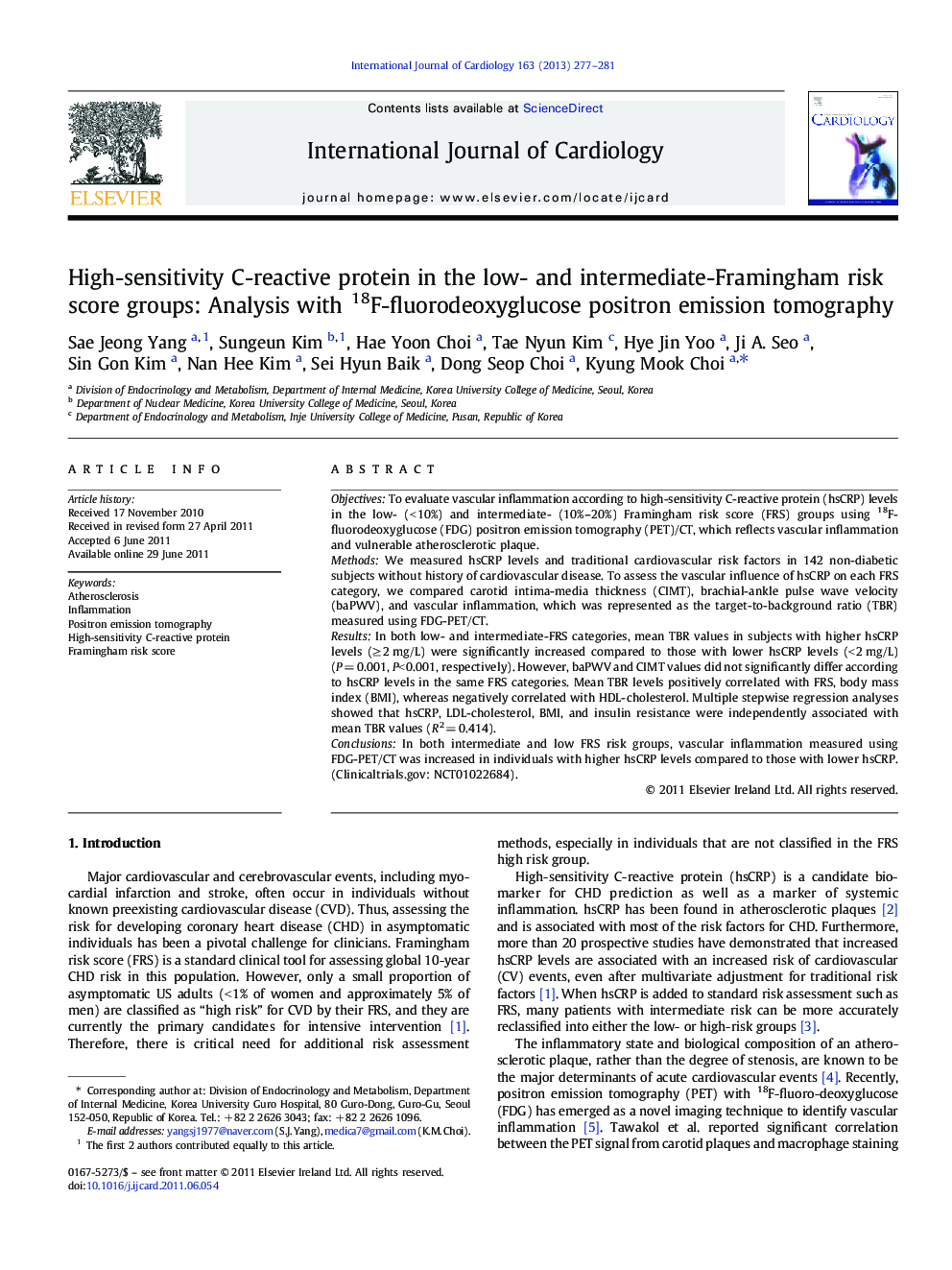| Article ID | Journal | Published Year | Pages | File Type |
|---|---|---|---|---|
| 5975751 | International Journal of Cardiology | 2013 | 5 Pages |
ObjectivesTo evaluate vascular inflammation according to high-sensitivity C-reactive protein (hsCRP) levels in the low- (< 10%) and intermediate- (10%-20%) Framingham risk score (FRS) groups using 18F-fluorodeoxyglucose (FDG) positron emission tomography (PET)/CT, which reflects vascular inflammation and vulnerable atherosclerotic plaque.MethodsWe measured hsCRP levels and traditional cardiovascular risk factors in 142 non-diabetic subjects without history of cardiovascular disease. To assess the vascular influence of hsCRP on each FRS category, we compared carotid intima-media thickness (CIMT), brachial-ankle pulse wave velocity (baPWV), and vascular inflammation, which was represented as the target-to-background ratio (TBR) measured using FDG-PET/CT.ResultsIn both low- and intermediate-FRS categories, mean TBR values in subjects with higher hsCRP levels (â¥Â 2 mg/L) were significantly increased compared to those with lower hsCRP levels (< 2 mg/L) (P = 0.001, P< 0.001, respectively). However, baPWV and CIMT values did not significantly differ according to hsCRP levels in the same FRS categories. Mean TBR levels positively correlated with FRS, body mass index (BMI), whereas negatively correlated with HDL-cholesterol. Multiple stepwise regression analyses showed that hsCRP, LDL-cholesterol, BMI, and insulin resistance were independently associated with mean TBR values (R2 = 0.414).ConclusionsIn both intermediate and low FRS risk groups, vascular inflammation measured using FDG-PET/CT was increased in individuals with higher hsCRP levels compared to those with lower hsCRP. (Clinicaltrials.gov: NCT01022684).
Research highlights⺠hsCRP. ⺠Framingham risk score. ⺠18-FDG/PET CT
